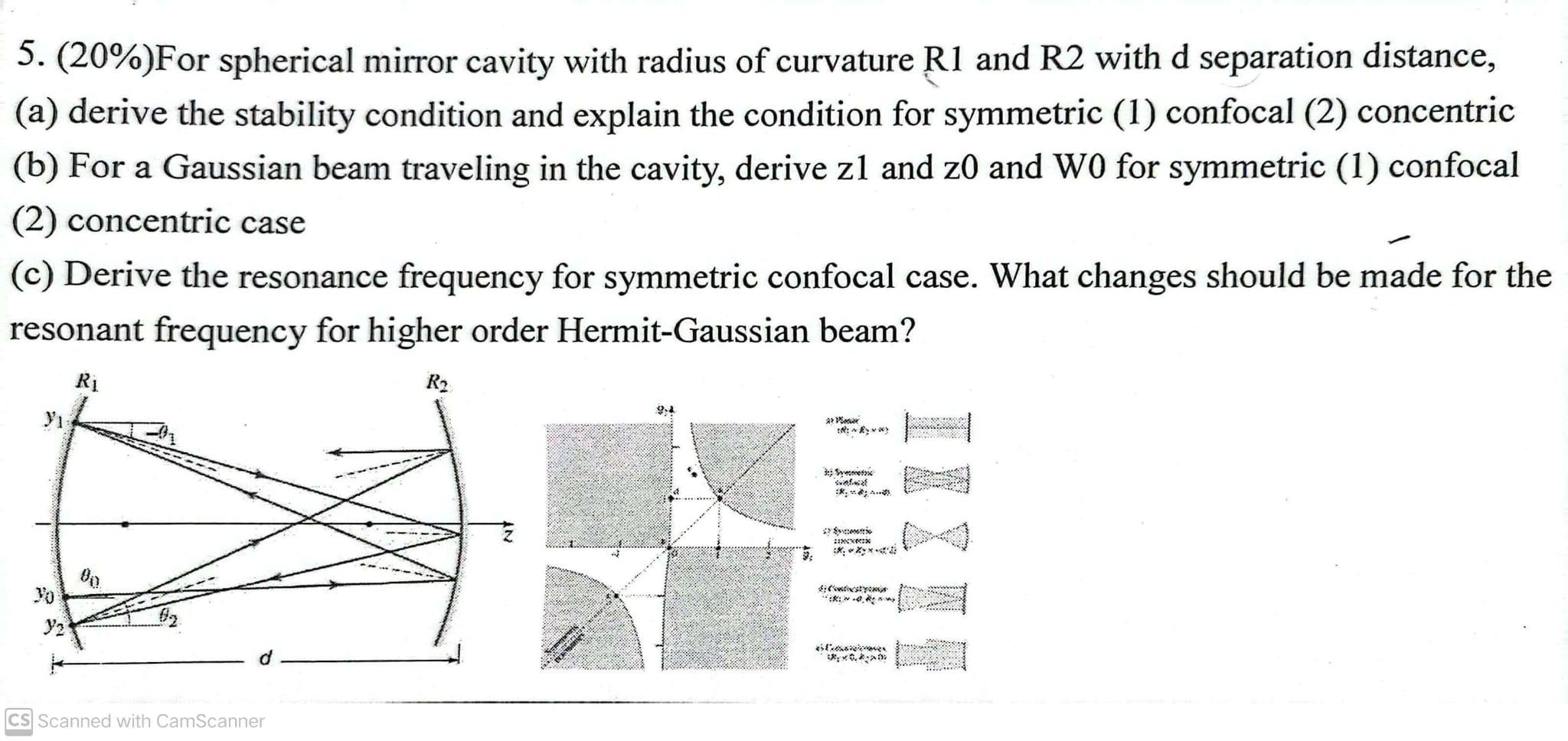Home /
Expert Answers /
Physics /
5-20-for-spherical-mirror-cavity-with-radius-of-curvature-mathrm-r-1-and-m-pa304
(Solved): 5. \( (20 \%) \) For spherical mirror cavity with radius of curvature \( \mathrm{R} 1 \) and \( \m ...
5. \( (20 \%) \) For spherical mirror cavity with radius of curvature \( \mathrm{R} 1 \) and \( \mathrm{R} 2 \) with \( \mathrm{d} \) separation distance, (a) derive the stability condition and explain the condition for symmetric (1) confocal (2) concentric (b) For a Gaussian beam traveling in the cavity, derive \( \mathrm{z} 1 \) and \( \mathrm{z} 0 \) and W0 for symmetric (1) confocal (2) concentric case (c) Derive the resonance frequency for symmetric confocal case. What changes should be made for the resonant frequency for higher order Hermit-Gaussian beam? \[ \begin{array}{l} \text { " } \\ \text { ( } \\ \end{array} \] CS Scanned with CamScanner
CS Scanned with CamScanner
Expert Answer
(a) Spherical mirrors are used in laser cavities to form a resonant cavity, which allows the laser to produce a beam with a narrow frequency spectrum.

